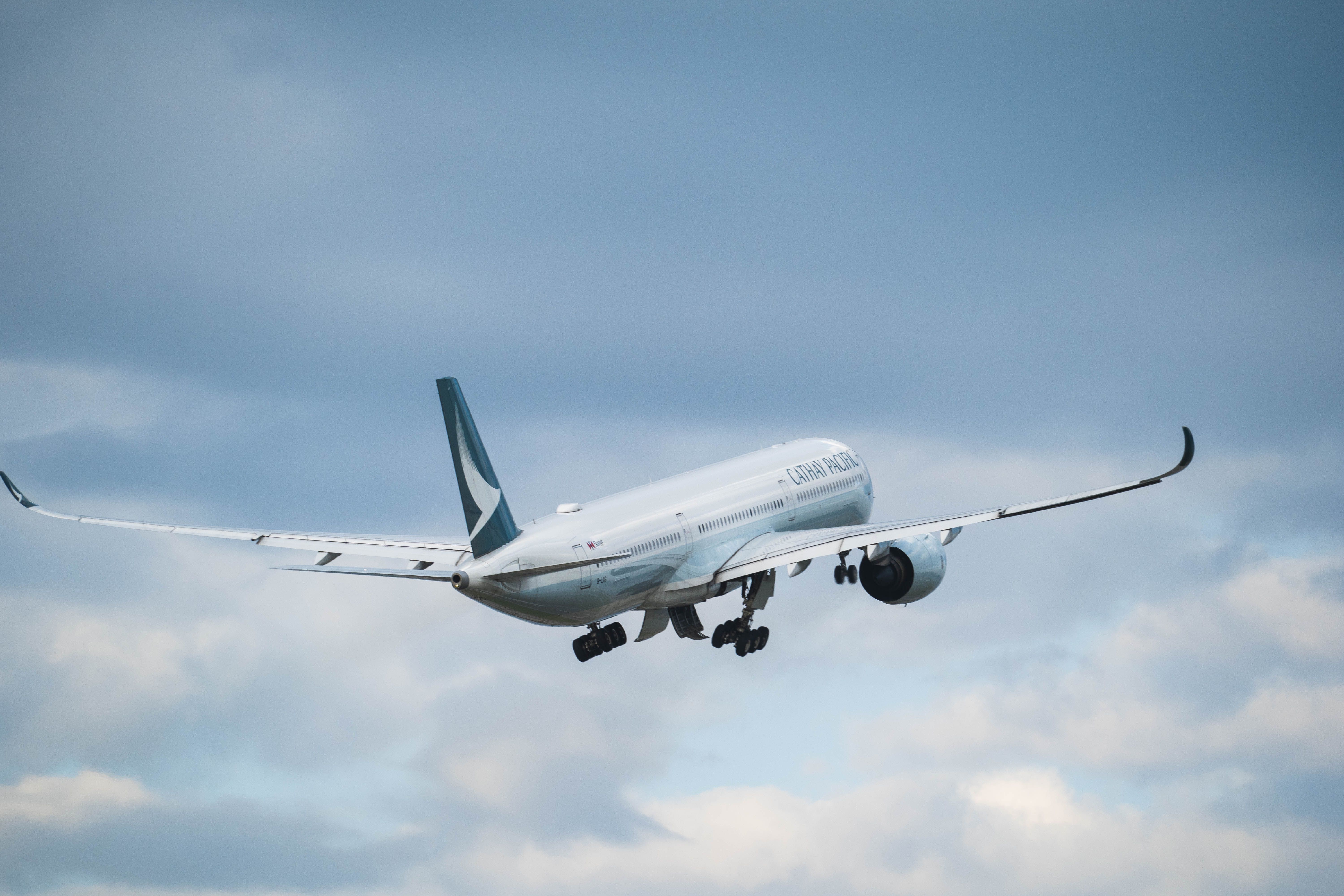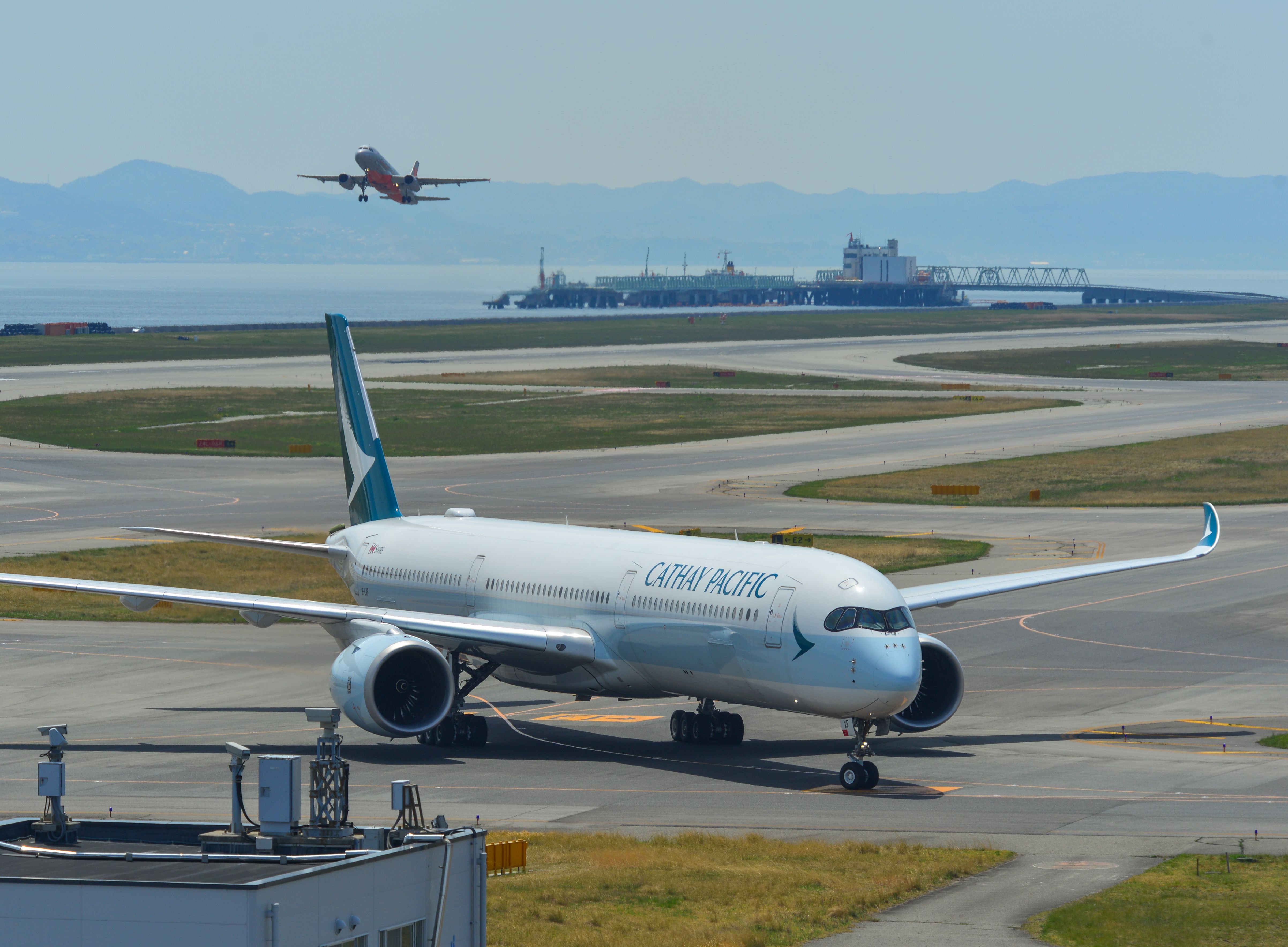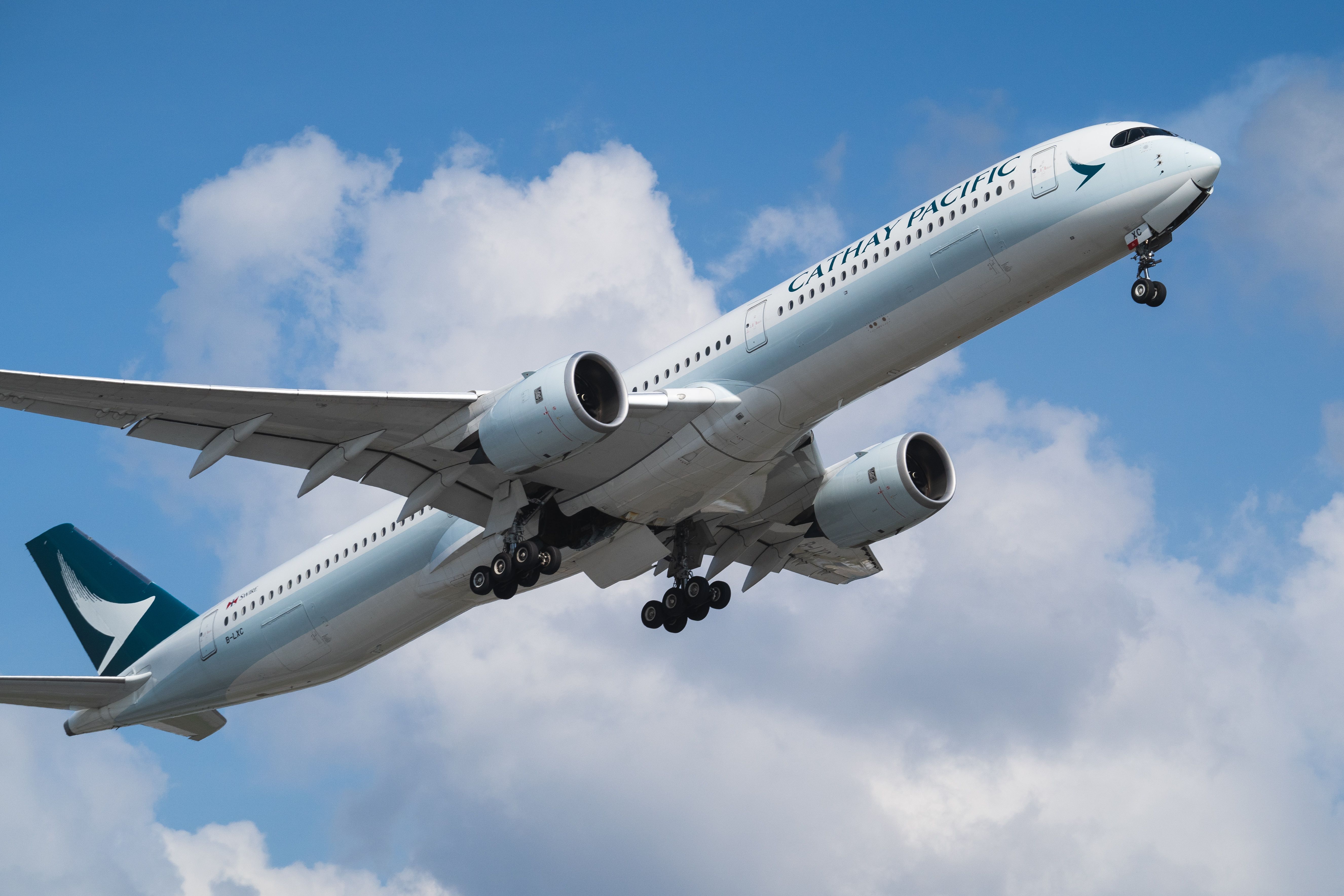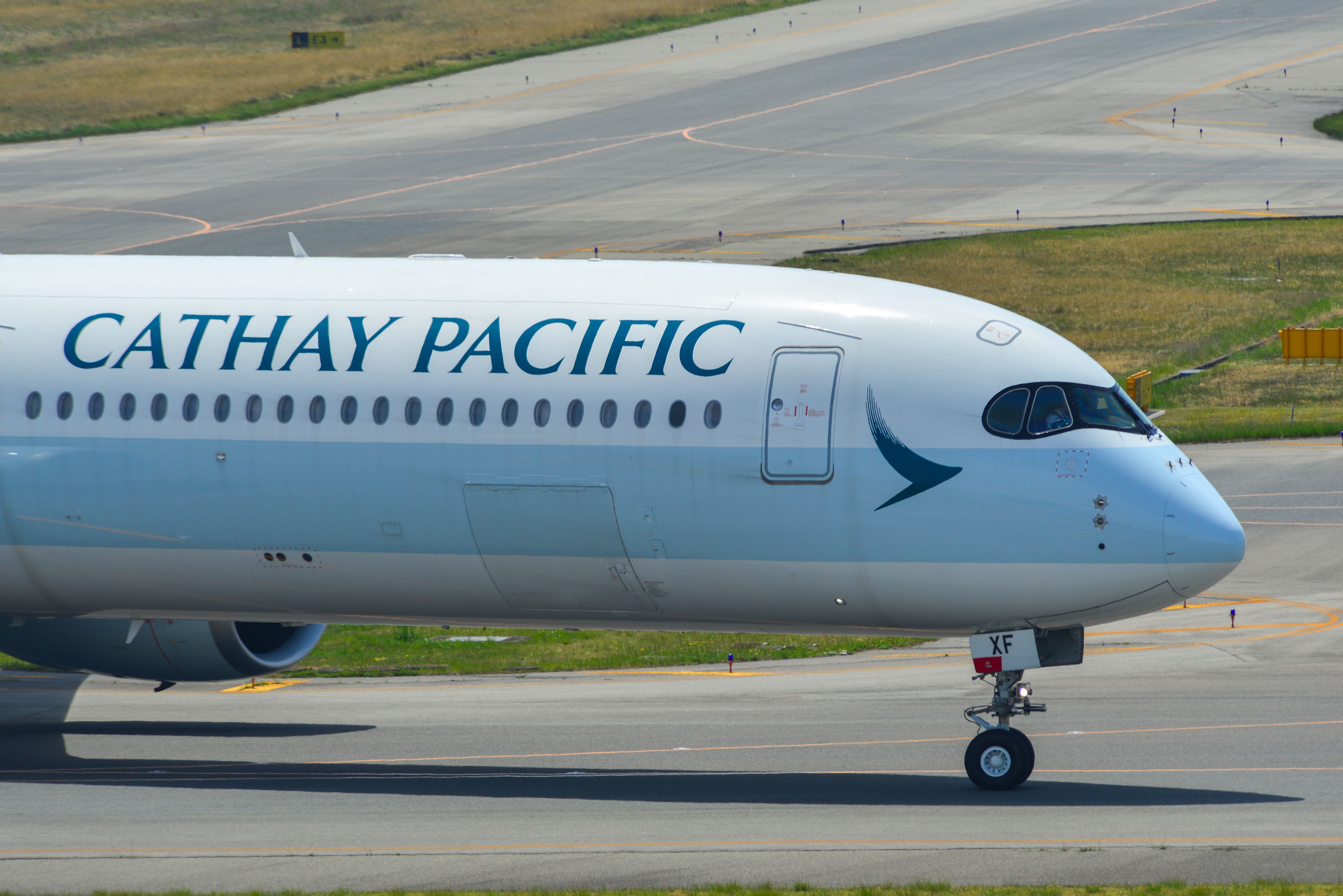A preliminary report by the Hong Kong Air Accident Investigation Authority (AAIA) has confirmed that the Cathay Pacific
Airbus A350-1000 engine fire, resulting in mid-air turnback, stemmed from a damaged fuel hose on the number two engine.
Downgrading the status of the emergency
In the synopsis of the incident, the AAIA disclosed that the Cathay Pacific A350-1000
, registered as B-LXI, was scheduled to operate flight CX383 from Hong Kong International Airport (HKG) to Zurich Airport (ZRH) on September 2.
Two Rolls-Royce Trent XWB-97s power the A350-1000, including the aircraft involved in the incident.
The aircraft took off from runway 07R at 00:24 local time (UTC +8). However, just 40 seconds after the A350-1000 lifted off from HKG, the flight crew received an engine fire warning and began going through the Electronic Centralized Aircraft Monitor (ECAM) procedures.
Photo: Terry K | Shutterstock
Explaining the ECAM, the AAIA said that it was an Airbus
system that monitored and displayed engine and aircraft information to the pilots, and in the case of a fault, it would display the problem and potentially show the steps to alleviate the issue.
Nevertheless, the flight crew shut down the number 2 engine and discharged a single fire extinguisher bottle. As a result, the engine’s fire warning disappeared after 59 seconds.
Initially, the pilots declared a MAYDAY, which signals a life-threatening emergency according to the AAIA. Later, the flight crew downgraded the emergency to PAN PAN, which means that the situation did not immediately threaten the lives of people onboard the aircraft.
After dumping fuel, the A350-1000 landed back at HKG
at 1:40:29 local time, more than an hour later after it took off from Hong Kong.
Damaged Rolls-Royce Trent XWB-97 engine
During the post-flight examination, the AAIA found that the steel-braided sheath of the fuel hose, namely the secondary fuel manifold hose, connected to the number 17 fuel spray nozzle, was ruptured, as evidenced by a hole in the hose.
“Additionally, black soot was observed on the aft section of the core engine, indicating signs of a fire. Burn marks were also noted on the underside of the two thrust reverser cowls.”
Five additional secondary fuel manifold hoses also had either frayed metal braids or collapsed structures inside the hose, according to the AAIA.
Photo: Phuong D. Nguyen | Shutterstock
Further inspections also revealed that fuel that was directed to the fuel spray nozzle could leak through the ruptured secondary manifold hose, and with contributing factors, such as the presence of oxygen and an ignition source, such as heat, this could have resulted in a fire that could have spread to the surrounding area.
“If not promptly detected and addressed, this situation, along with further failures, could escalate into a more serious engine fire, potentially causing extensive damage to the aircraft.”
The AAIA disclosed that several stakeholders, including France’s Bureau of Enquiry and Analysis for Civil Aviation Safety (Bureau d’Enquêtes et d’Analyses pour la sécurité de l’aviation civile, BEA), the United Kingdom Air Accidents Investigation Branch (AAIB), and the German Federal Bureau of Aircraft Accident Investigation (Bundesstelle für Flugunfalluntersuchung, BFU), have been involved in the investigation of the incident.
To note, while Rolls-Royce
builds the Trent XWB-97 in the UK, Rolls-Royce Deutschland holds the type certificate (TC) for the engine, which was why the AAIA involved the BFU in the investigation.
Inspection requirements of the secondary fuel manifold hoses
According to the AAIA, it had issued its safety recommendation to inspect the secondary fuel manifold hoses to the European Union Aviation Safety Agency (EASA)
on September 3.
“This serious incident illustrates the potential for fuel leaks through the ruptured secondary fuel manifold hose, which could result in engine fires. Therefore, swift action is warranted.”
The AAIA’s safety recommendation stated that EASA should mandate Rolls-Royce Deutschland to develop continuing airworthiness information related to the inspection requirements of the secondary fuel manifold hoses of the Trent XWB-97 engine to ensure their airworthiness.
EASA and Rolls-Royce responded quickly, and on September 5, the latter issued a non-modification service bulletin (NMSB), and subsequently, the European regulator published an emergency airworthiness directive (EAD).
Photo: Terry K | Shutterstock
The EAD mandated operators of the A350-1000, with the exception of aircraft equipped with 34 engines with certain serial numbers (s/n), to inspect fuel manifold hoses within either three, seven, or 30 days.
The timing of inspections depended on the number of previous engine shop visits. For example, XWB-97s that had accumulated 18,500 flight hours (FH) or 2,300 flight cycles (FC) or more since new and that have had two or more previous shop visits have to be inspected three days after the effective date – September 9 – of the EAD (Group 1).
If the engines only had a single previous engine shop visit, the inspections must be completed after seven days (Group 2), while XWB-97s that do not belong to either group have to be inspected 30 days after the effective date of the emergency directive.
In the case of any discrepancies or damaged fuel hoses, EASA referred to the NMSB for instructions to replace these parts.
“From the effective date of this AD, installation of an engine on an aeroplane is allowed, provided the engine passed an inspection (no finding detected or finding corrected) in accordance with the instructions of the NMSB.”
EASA’s EAD also emphasized that operators must report inspection results to Rolls-Royce two days after completing the engine inspections.
Grounding the fleet
While the EAD did not mandate a global grounding of the fleet, Cathay Pacific voluntarily parked its A350-1000 to inspect the whole fleet of aircraft.
According to ch-aviation data, the flag carrier of Hong Kong has 18 A350-1000s in its fleet, with two, including the incident aircraft, B-LXI, being marked as inactive.
Photo: Phuong D. Nguyen | Shutterstock
In a previous statement to Simple Flying, Keith Brown, the Director of Engineering of Cathay Pacific, said that each aircraft had been undergoing rigorous inspections and once they are cleared to return to service, will resume commercial flights.
Data from the aviation analytics company Cirium showed that in September, Cathay Pacific has scheduled 44 fewer flights with the A350-1000 year-on-year (YoY), despite ch-aviation fleet records showing that the airline has had the same number of A350-1000s since 2022.




